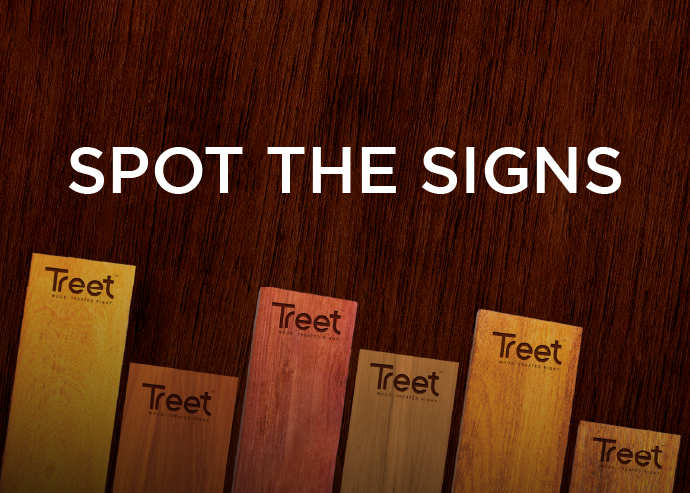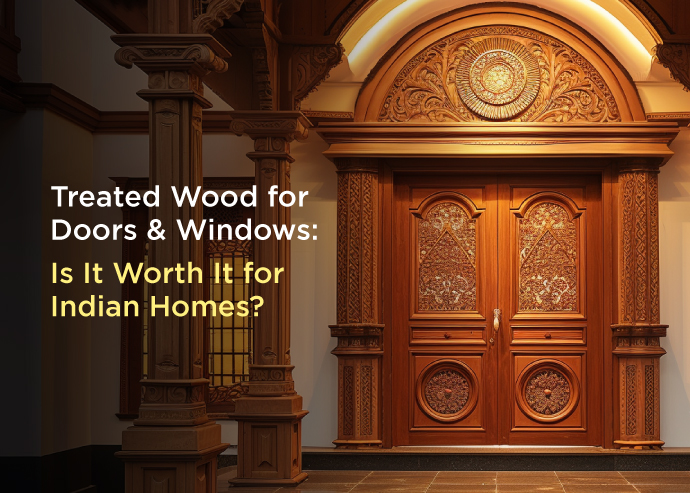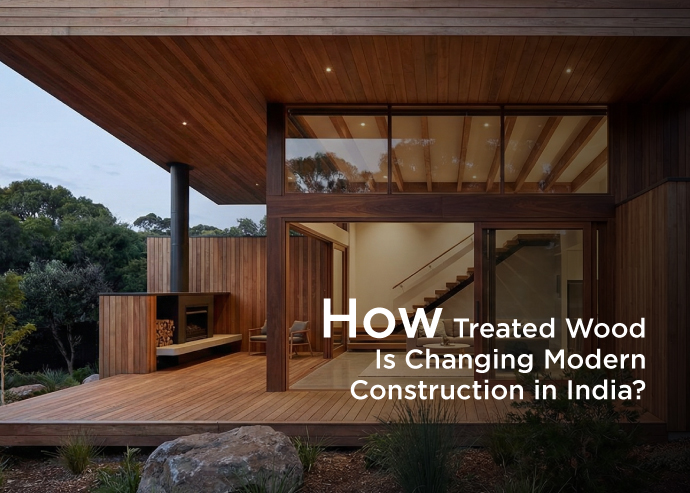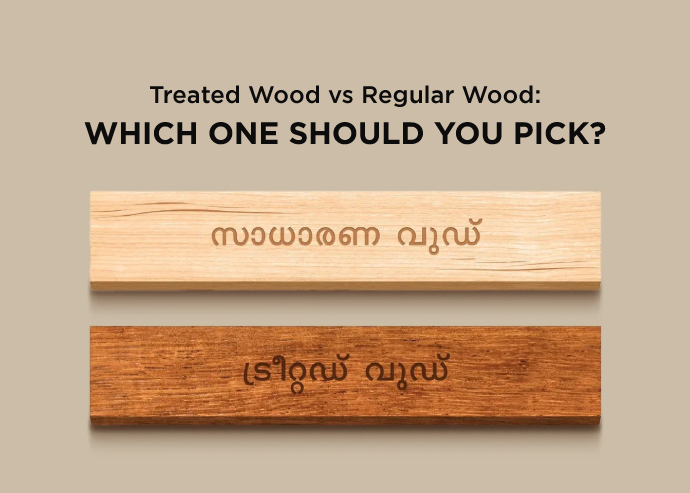Blog Details

5 Signs You Should Consider Treated Wood for Your Next Project
Picture this: You’ve just finished building a beautiful wooden balcony railing or a cozy outdoor sit-out. It looks stunning — warm, natural, inviting. But give it a few monsoons, and the story changes. The shine fades, cracks begin to show, and slowly the wood starts to lose its strength. It’s a familiar sight across India, where harsh sun, humidity, and heavy rains test even the best materials.
Here’s the thing – the problem isn’t wood itself. It’s how we use it. And that’s where treated wood quietly steps in as a smarter, longer-lasting solution.
In this blog, we’ll talk about five clear signs that tell you it’s time to consider treated wood for your next project. We’ll cover how it holds up better in Indian weather, why it’s your best defense against termites, where it makes the biggest difference (especially outdoors), how it actually saves money over time, and finally, why it’s also the more eco-friendly choice for conscious homeowners and builders.
Let’s break it down.
1. Extreme Exposure? Your Wood Needs a Weather Shield
If you live anywhere in India, chances are your wood has seen everything – blistering summer heat, endless monsoon rains, and dust storms that coat every surface. From humid cities like Kochi and Mumbai to the dry heat of Jaipur or the coastal salt air in Chennai, untreated wood simply can’t cope with that level of punishment.
The problem is moisture and temperature variation. Regular wood absorbs water, expands, and then shrinks again when it dries. Over time, this cycle leads to cracks, warping, and eventually, decay.
Treated wood, however, is chemically enhanced to resist exactly that. It undergoes a pressure treatment process that drives protective preservatives deep into the fibers. This helps the wood repel moisture and stand up to fungi and mold.
What this means for you:
Your deck won’t bend out of shape. Your balcony railing won’t turn brittle. Your garden seating won’t need to be replaced every few years. Treated wood is designed for the kind of weather India throws at it — and it stays beautiful far longer with minimal maintenance.
2. Termites Have Ever Been a Problem
Every Indian homeowner has either fought termites or knows someone who has. They work silently, eat relentlessly, and before you realize it, your solid wooden door or cupboard is hollow from the inside. Termite damage is especially common in tropical and semi-tropical areas like Kerala, Tamil Nadu, and West Bengal.
Treated wood is built to counter exactly that. The preservatives used during treatment create a chemical shield that makes the wood inedible to termites and other wood-boring insects. And because the treatment penetrates deep into the structure — not just the surface — it protects from the inside out.
So if you’ve ever had to call pest control more than once, or if you live in a termite-prone region, switching to treated wood is a long-term solution that saves money, time, and a lot of frustration.
3. You’re Building Something That Lives Outdoors
Outdoor woodwork faces a different level of exposure altogether. Think of garden fences, balcony decks, window frames, benches, cladding, or even small utility sheds. Rainwater, sun, wind, and pollution constantly wear them down.
Untreated wood outdoors is like leaving your phone out in the rain — it won’t survive for long. Treated wood, on the other hand, is designed for outdoor life. It doesn’t absorb water as quickly, it doesn’t rot, and it holds paint and polish much better.
If you’re building something exposed to the elements, treated wood isn’t a luxury — it’s basic common sense. Even simple additions like a car porch structure or outdoor seating area benefit from it. A small upfront investment ensures you won’t be redoing the work every few years.
4. You Prefer Long-Term Value Over Short-Term Savings
Here’s a common mistake: comparing untreated and treated wood purely on price. Sure, untreated wood often looks cheaper on the bill, but what you save now, you’ll likely spend later — on repairs, replacements, and pest control.
Treated wood might cost a bit more upfront, but its lifespan is significantly longer. Some varieties last 10–20 years with just minimal upkeep. And because it stays stronger and resists weathering, it helps your overall project maintain its integrity and finish.
Think about it like this: you wouldn’t buy the cheapest paint if it meant repainting every year, right? The same logic applies here. With treated wood, you’re not just paying for material — you’re investing in peace of mind.
And there’s another benefit. Since treated wood holds paint and polish better, it needs fewer touch-ups over time. Whether it’s a sun-facing balcony or a shaded garden wall, your wood retains that rich, natural look for much longer.
5. You Want to Build Sustainably
Now more than ever, sustainability matters. Many people think wood is automatically an unsustainable material because it comes from trees. But when it’s responsibly sourced and treated to last, wood can actually be one of the most sustainable building materials out there.
Here’s why: treated wood extends the usable life of timber, which means fewer trees need to be cut over time. Modern treatment processes also use environment-safe preservatives that meet global standards.
When builders or homeowners choose certified treated wood, they’re indirectly reducing waste and promoting efficient use of natural resources. Compared to materials like steel or concrete, wood also has a much lower carbon footprint during production.
So if you’re trying to build responsibly — maybe a home renovation, a farm structure, or even an office space — treated wood helps you do that without compromising on aesthetics or durability.
Bringing It All Together
Treated wood isn’t just another building material — it’s a long-term partner for anyone who wants their projects to stay strong, look good, and last through India’s climate challenges. It solves real problems homeowners and builders face every day: weather damage, termites, short lifespans, and maintenance headaches.
From your front gate to your balcony, from outdoor furniture to garden fences, treated wood quietly does the hard work so your structures don’t have to.
So if you’re planning a new project — whether it’s a home improvement or something bigger — take a minute to consider this question:
Would you rather keep fixing things every few years, or build once and enjoy it for decades?
If your answer is the second one, it’s time to start thinking treated.




